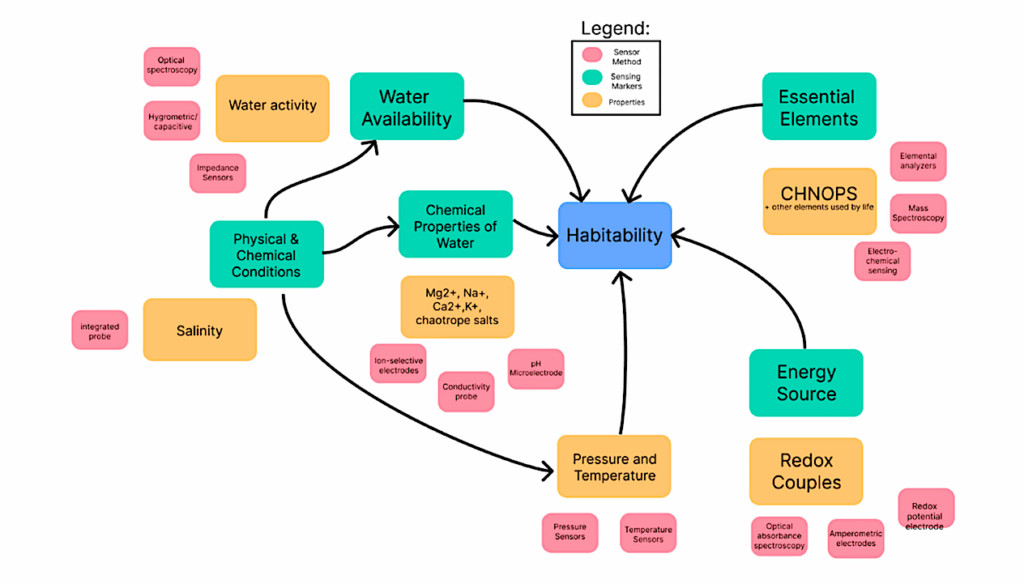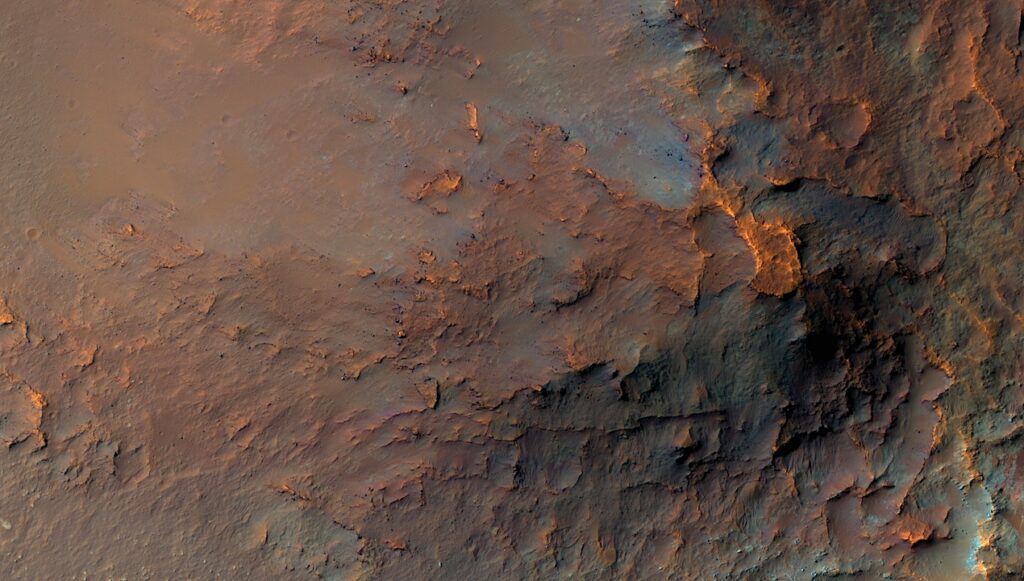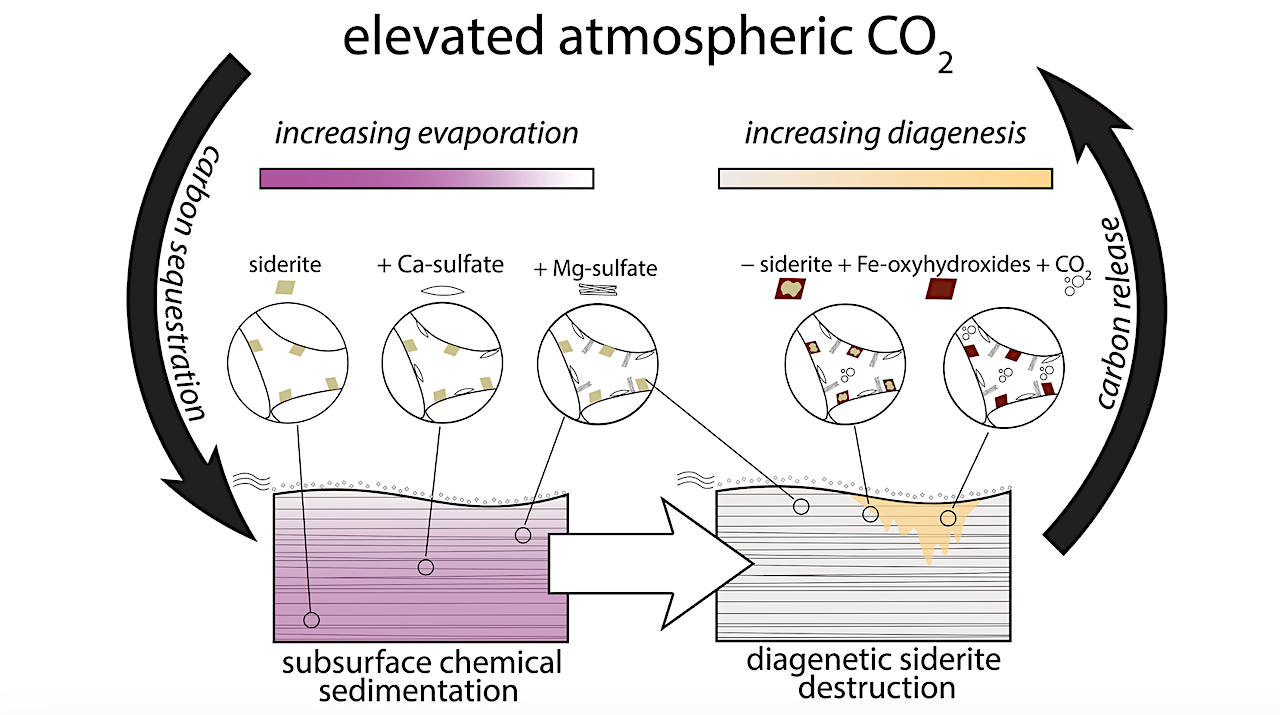Now Reading: Thermogenic Methane Production in Antarctic Subglacial Hydrocarbon Seeps
-
01
Thermogenic Methane Production in Antarctic Subglacial Hydrocarbon Seeps
Thermogenic Methane Production in Antarctic Subglacial Hydrocarbon Seeps
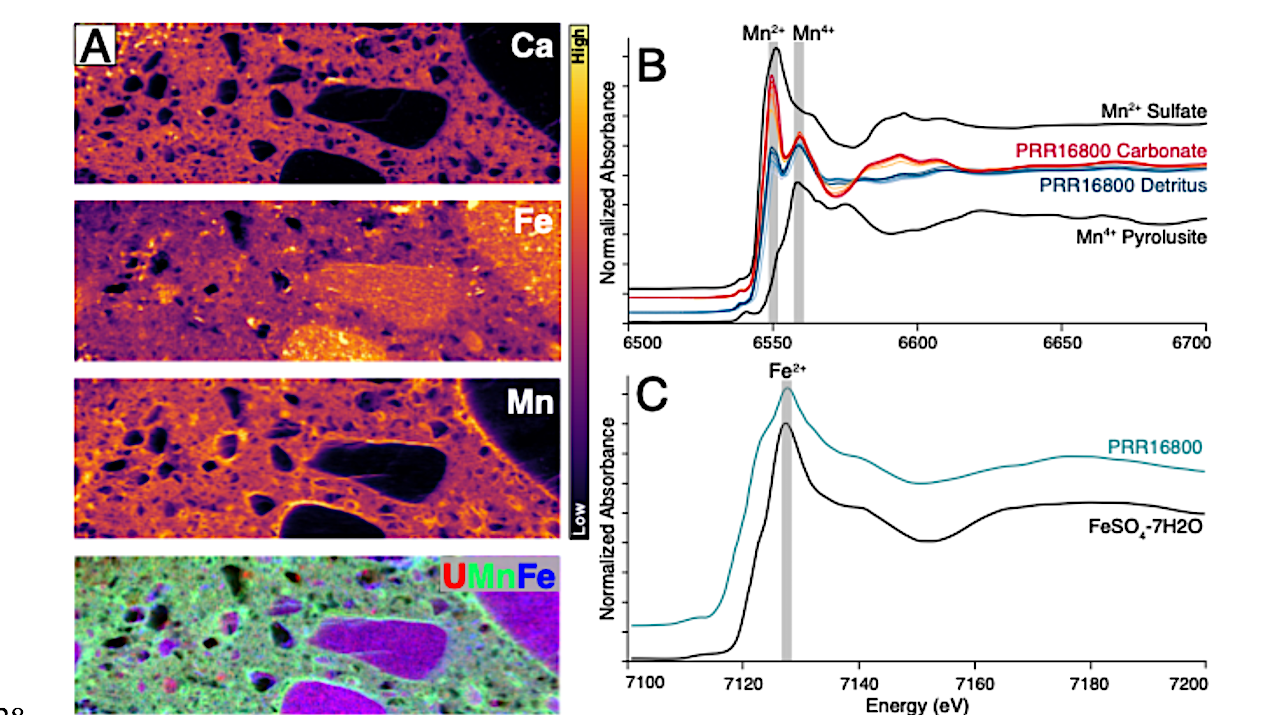
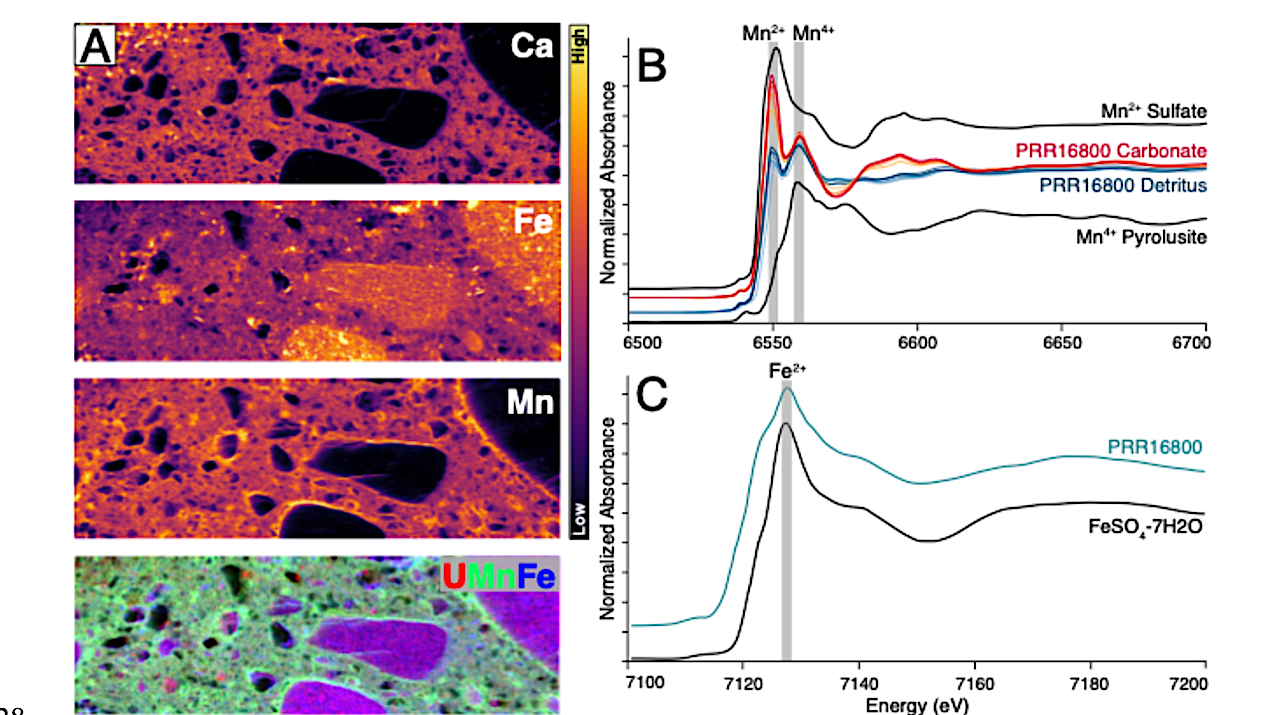
A: XRF maps of Ca, Fe, and Mn; RGB map of U, Mn, and Fe. Calcite and detrital minerals can be distinguished by areas of high and low abundance in the Ca map. B: Manganese K-edge μXANES. C: Iron K-edge μXANES. Sample spectra in B,C shown as colored curves; reference spectra shown as black curves. — eartharxiv.org
Methane forms beneath ice sheets through microbial methanogenesis and thermogenic breakdown of organic matter, creating a potentially large greenhouse gas reservoir prone to release during glacial retreat.
Subglacial thermogenic methanogenesis can increase gas buildup and create oases for life, but this process has not yet been observed in Antarctica, contributing to uncertainty in the spatial distribution and magnitude of methane reserves beneath the ice sheet.
Here, we present evidence of Antarctic subglacial thermogenic methane production in shallow basal sediments, preserved in carbonate nodules collected at Elephant Moraine and the Pensacola Mountains, East Antarctica.
Oxygen and uranium-series isotope analyses indicate that these carbonates precipitated from glacial meltwater during deglacial periods in the late Pleistocene. Carbonate δ13C values as low as -32.75 ‰ identify thermogenic methane as a primary carbon source, while clumped isotope measurements indicate formation temperatures of 12 – 20˚C, consistent with a geothermal origin.
Lipid biomarker analyses further show that organic matter preserved in the nodules is highly thermally matured. These findings indicate that deep-sourced thermogenic methane migrated as hydrocarbon seeps to shallow pore spaces within basal sediments, demonstrating that geothermally active areas can be hotspots for methane accumulation below the Antarctic Ice Sheet.
High manganese concentrations and the presence of pyrite oxidation products in the carbonate nodules suggest that this methane was oxidized via sulfate or manganese reduction by chemosynthetic microbes. Subglacial hydrocarbon seeps may thus represent habitable environments in isolated subglacial environments on Earth and icy planetary bodies.

A,B: Satellite images of samples collection locations in the Pensacola Mountains and Elephant Moraine, respectively. C: Carbonate nodule from Elephant Moraine. D,E: Representative examples of carbonate nodules from the Pensacola Mountains. Scale bars are 1cm. Yellow box on bottom represents area analyzed for XRF and XANES. — eartharxiv.org
Thermogenic Methane Production in Antarctic Subglacial Hydrocarbon Seeps, eartharxiv.org
Astrobiology,
Stay Informed With the Latest & Most Important News
Previous Post
Next Post
-
 012024 in Review: Highlights from NASA in Silicon Valley
012024 in Review: Highlights from NASA in Silicon Valley -
 02Panasonic Leica Summilux DG 15mm f/1.7 ASPH review
02Panasonic Leica Summilux DG 15mm f/1.7 ASPH review -
 03How New NASA, India Earth Satellite NISAR Will See Earth
03How New NASA, India Earth Satellite NISAR Will See Earth -
 04And Thus Begins A New Year For Life On Earth
04And Thus Begins A New Year For Life On Earth -
 05Astronomy Activation Ambassadors: A New Era
05Astronomy Activation Ambassadors: A New Era -
06SpaceX launch surge helps set new global launch record in 2024
-
 07Space Force plans new ‘Futures Command’ amid pressure to speed up modernization
07Space Force plans new ‘Futures Command’ amid pressure to speed up modernization













